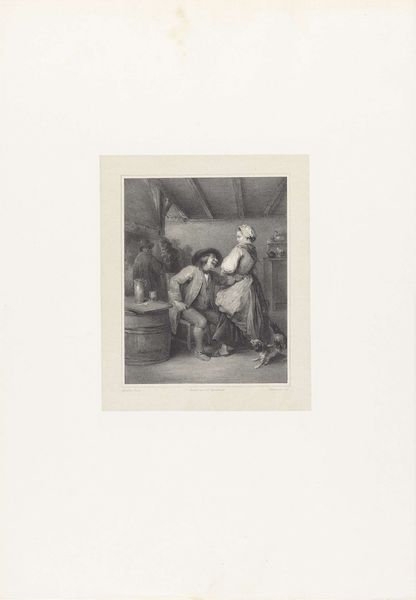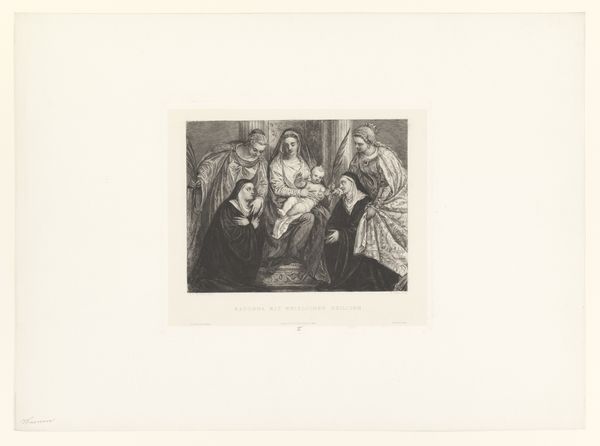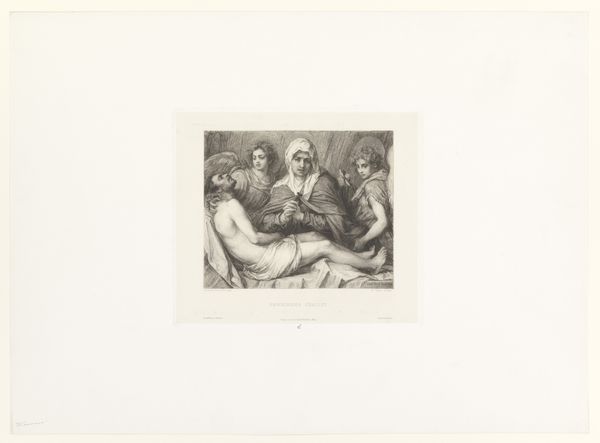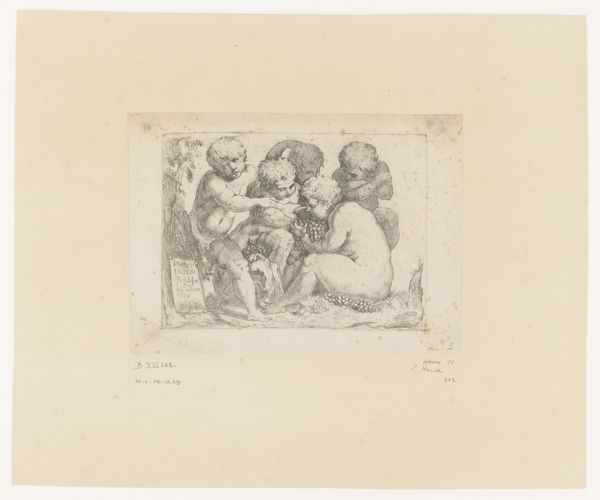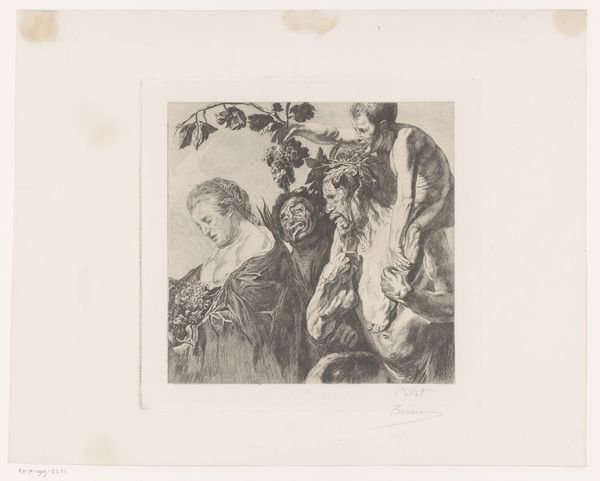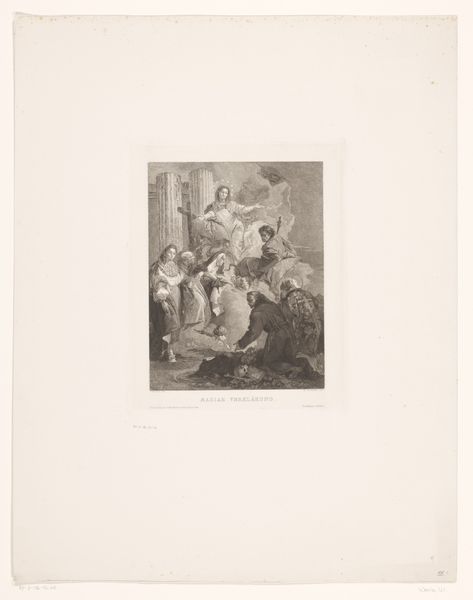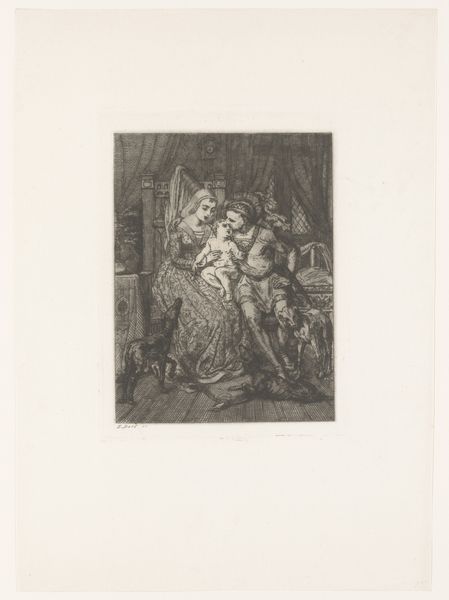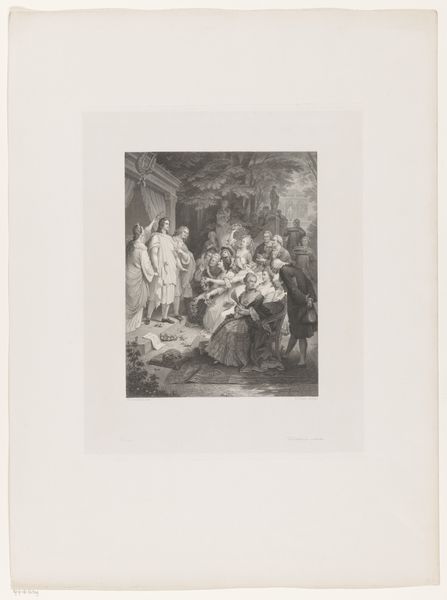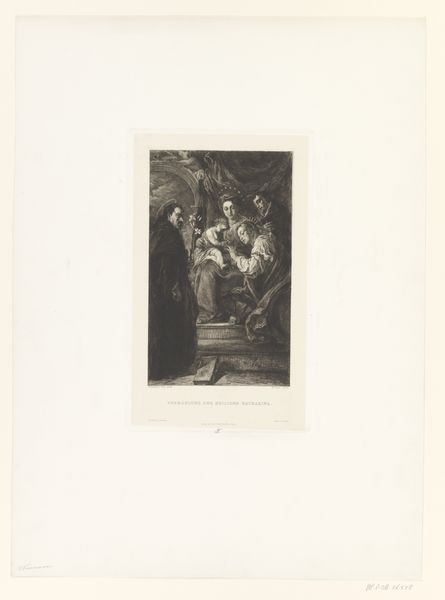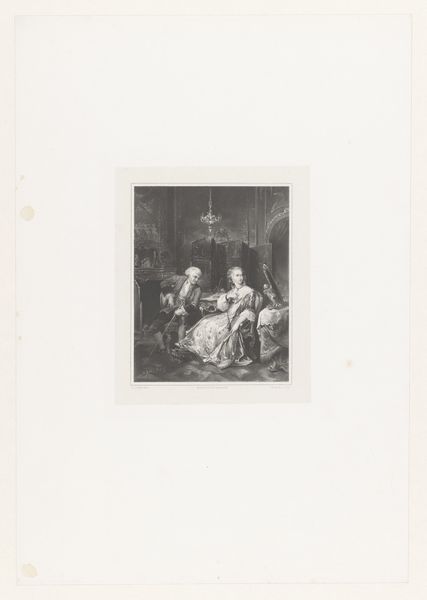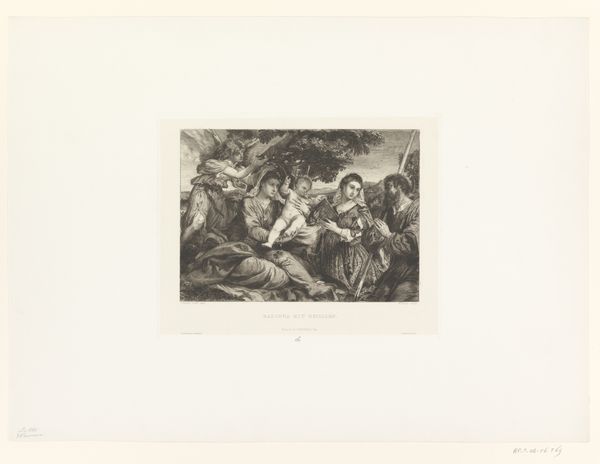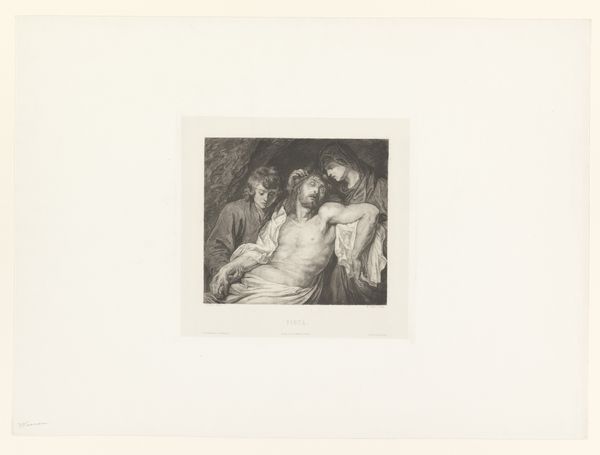
print, etching, paper, ink, engraving
#
pencil drawn
#
light pencil work
#
narrative-art
#
ink paper printed
# print
#
etching
#
pencil sketch
#
old engraving style
#
paper
#
11_renaissance
#
ink
#
pencil drawing
#
pencil work
#
history-painting
#
engraving
Dimensions: height 279 mm, width 316 mm
Copyright: Rijks Museum: Open Domain
Editor: Here we have William Unger's etching "Holy Family, with the Cherries", created sometime between 1861 and 1889. The monochromatic palette and the figures gathered closely give the image a sense of intimacy, even solemnity. What compositional elements stand out to you? Curator: The formal elements of this engraving, particularly the contrast between light and shadow, are meticulously orchestrated to direct the viewer’s eye. Notice how the artist uses a dense network of lines to sculpt the figures, achieving a remarkable level of detail. How do you see the artist creating depth here without traditional shading? Editor: Well, I notice how the cross-hatching becomes denser in the darker areas, which suggests shadow and gives form to the figures. It's almost like he’s building the image with tiny strokes. Curator: Precisely. Unger’s deliberate use of line weight and density creates visual texture. What do you observe about the spatial relationships and arrangement of figures? Editor: They seem carefully arranged to lead the eye from left to right. It seems intentional how they are arranged. Curator: Observe how each figure’s gaze contributes to a cohesive visual narrative, reinforcing the underlying formal unity. Also, the composition adheres to a certain classical standard of the time. What aspects of form in general attract your attention in engravings of this era? Editor: I see how technical skill becomes incredibly important, allowing the creation of tones, textures, and volume, even without relying on color. I didn't quite consider the formal construction being as crucial until now. Curator: Indeed. Formal analysis encourages us to see beyond the subject matter. A fresh perspective on the underlying principles helps us understand art at a very different level.
Comments
No comments
Be the first to comment and join the conversation on the ultimate creative platform.
